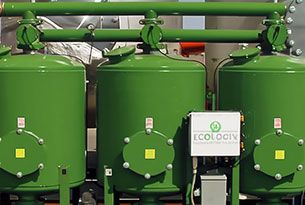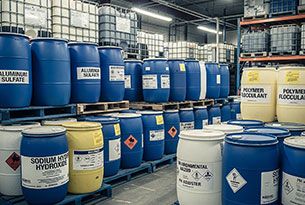Core Principles of Ion Exchange
Ion exchange is a cornerstone technology for water purification, leveraging specialized resins to selectively remove dissolved ionic contaminants, such as calcium, magnesium, nitrates, sulfates, or toxic metals from aqueous solutions. This process replaces undesirable ions with preferred ones (e.g., hydrogen, sodium, or hydroxide) through electrostatic interactions within a resin matrix. Advances in resin chemistry, including higher-capacity polymers and optimized regeneration protocols, have enhanced efficiency and sustainability, making ion exchange indispensable in industrial and municipal water treatment.
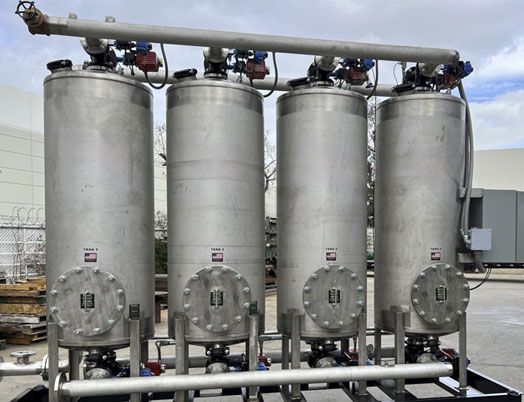
Process Mechanics
The ion exchange process unfolds in distinct phases, orchestrated within a pressure vessel housing ion-specific resin beads:
- Resin Bed Interaction
Raw water flows through a bed of spherical resin beads, each bearing fixed ionic charges. Initially, the resin is saturated with weakly bound ions (e.g., Na⁺, H⁺, Cl⁻, or OH⁻). Resins are categorized as:- Cationic: Targets positively charged ions (e.g., Ca²⁺, Mg²⁺, Fe²⁺).
- Anionic: Targets negatively charged ions (e.g., Cl⁻, SO₄²⁻, NO₃⁻).
- Ion Displacement
As water contacts the resin, ions with higher electrostatic affinity displace the resin’s weakly bound ions. For instance:- In softening, Na⁺ ions are swapped for Ca²⁺ or Mg²⁺, mitigating hardness.
- In deionization, H⁺ and OH⁻ ions replace most dissolved ions, yielding near-pure H₂O.
- Resin Saturation
Over time, the resin's exchange sites become occupied by captured ions, leading to exhaustion. Indicators include:- Hardness leakage in softeners.
- Elevated conductivity in deionized water.
- Reduced cycle times or increased pressure differentials across the bed.
- Regeneration Cycle
To restore capacity, the resin is flushed with a regenerant solution:- Softeners use sodium chloride (NaCl) brine.
- Cationic deionizer resins use acids (e.g., HCl, H₂SO₄).
- Anionic deionizer resins use caustic solutions (e.g., NaOH).
- Rinse and Reactivation
Post-regeneration, the resin is rinsed to eliminate residual regenerant. Once effluent quality meets specifications, the system resumes operation.
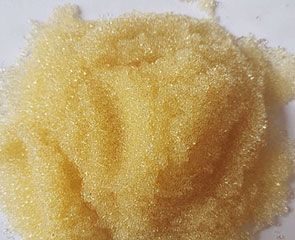
Optimizing Resin Performance
The resin bed is the critical component of ion exchange systems. Proper management ensures longevity, efficiency, and consistent water quality.
- Flow Rate Optimization
Maintain manufacturer-specified flow rates to ensure adequate resin-water contact. Excessive flows cause incomplete exchange, while insufficient flows lead to channeling, reducing efficiency. - Regeneration Precision
Use precise regenerant dosing (volume and concentration) tailored to resin type and application. Inadequate dosing compromises capacity, while proper soak and rinse protocols maximize resin recovery. Consult water treatment specialists for elution studies to fine-tune regeneration parameters. - Resin Fouling Mitigation
Common foulants include:- Iron/manganese: Forms oxidative coatings.
- Organics: Blocks exchange sites, prevalent in surface water.
- Chlorine: Degrades resin, particularly strong-base anionic types.
- Preventing Channeling
Uneven flow or air pockets disrupt uniform water distribution, causing premature breakthrough. Ensure proper tank refilling and air bleeding post-regeneration, and inspect distributors for integrity. - Performance Monitoring
Track metrics such as cycle duration, effluent quality (hardness, conductivity), and pressure drop. Anomalies may indicate fouling, resin degradation, or mechanical failures (e.g., damaged underdrains). - Resin Handling Protocols
Protect resin integrity by preventing freezing, desiccation, or contamination during transfer. Use clean equipment and avoid exposure to oils or lubricants.
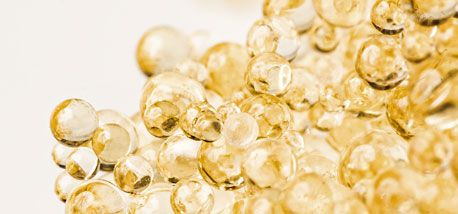
Ready to Optimize Your Water Treatment?
Connect with Ecologix Systems today to discuss your specific needs and discover how our advanced solutions can enhance your operations.
Contact Our Experts Now